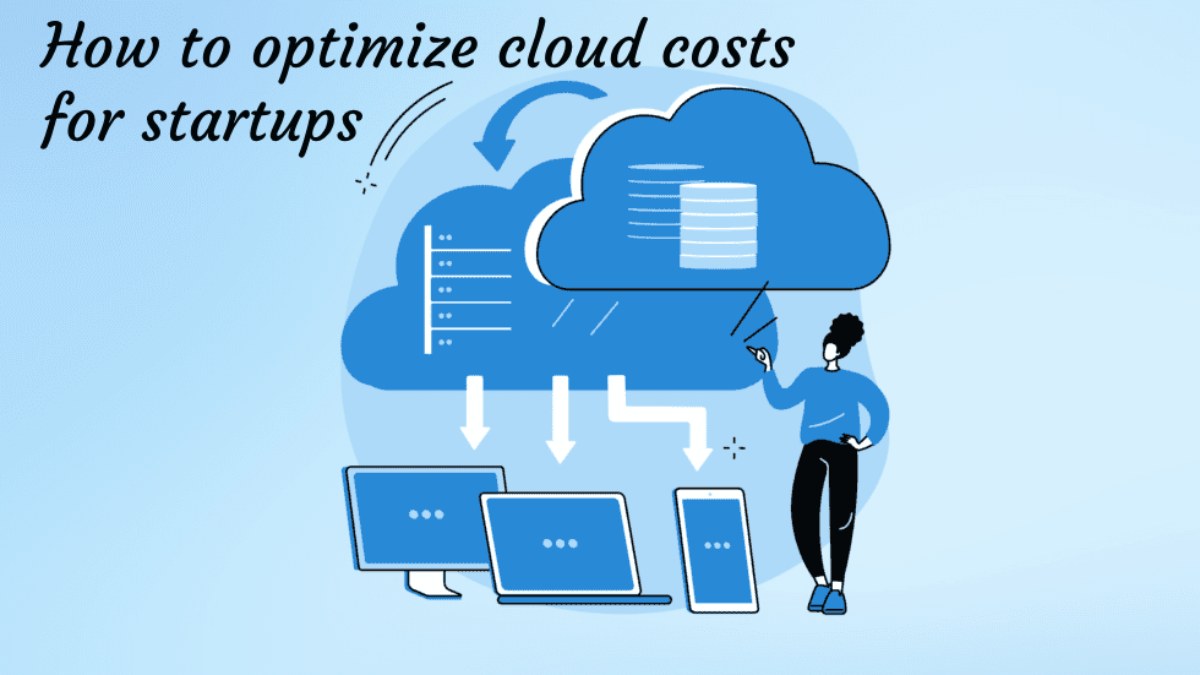
Are you thinking of How to optimize cloud costs for startups??
Are you a startup founder watching your cloud bill grow faster than your business?
You’re not alone. Cloud services are amazing for getting your startup off the ground, but they can also drain your budget if you’re not careful. The good news? There are smart ways to keep your cloud costs in check without sacrificing performance.
In this guide, we’ll walk you through simple, effective strategies to optimize your cloud spending. Ready to stop overpaying and start maximizing your cloud investment? Let’s dive in!
Easy guide on how to optimize cloud costs for startups
What is cloud cost optimization?
Cloud cost optimization is the process of managing and reducing overall cloud spending by identifying mismanaged resources, eliminating waste, reserving capacity for higher discounts, and right-sizing computing services to scale.
Definition:
It’s the practice of reducing your overall cloud spend by identifying mismanaged resources, eliminating waste, reserving capacity for higher discounts, and right-sizing computing services to scale.
Main goals:
- Reduce unnecessary spending
- Improve efficiency of cloud resources
- Align cloud costs with business needs
- Maximize the value of cloud investments
Key aspects:
- Resource allocation
- Usage monitoring
- Performance optimization
- Pricing model selection
Benefits:
- Lower operational costs
- Improved budgeting and forecasting
- Better resource utilization
- Enhanced cloud performance
Continuous process:
- It’s not a one-time task but an ongoing effort to keep cloud costs in check as business needs and cloud technologies evolve.
Cloud cost optimization is crucial for businesses of all sizes, especially startups, to ensure they’re getting the most value from their cloud investments without overspending
Easy guide on how to optimize cloud costs for startups:
- Right-size your resources:
Only use what you need. Regularly check and adjust your cloud resources to match your actual usage.
- Use auto-scaling:
Set up your systems to automatically scale up or down based on demand. This way, you’re not paying for idle resources.
- Take advantage of spot instances:
For non-critical tasks, use spot instances. They’re cheaper but can be interrupted.
- Leverage reserved instances:
If you know you’ll need certain resources in the long term, buy reserved instances for significant discounts.
- Monitor and analyze usage:
Use cloud provider tools to track your usage and spending. Look for patterns and opportunities to optimize.
- Optimize storage:
Use the right type of storage for your needs. Delete unnecessary data and use lifecycle policies to move less-used data to cheaper storage tiers.
- Use cost management tools:
Many cloud providers offer tools to help you track and manage costs. Use them!
- Consider multi-cloud or hybrid solutions:
Sometimes using multiple providers or a mix of cloud and on-premises solutions can be more cost-effective.
- Optimize your applications:
Design your apps to be cloud-efficient. This can significantly reduce resource usage and costs.
- Educate your team:
Make sure everyone understands the cost implications of their cloud usage and follows best practices.
Remember, the key is to regularly review and adjust your cloud setup as your startup grows and changes.
Some of the best cloud cost management tools for startups:
AWS Cost Explorer
- Built-in tool for AWS users
- Provides detailed cost breakdowns and usage reports
- Offers forecasting capabilities
Google Cloud Cost Management
- Native tool for Google Cloud Platform
- Offers cost breakdowns, budgeting, and forecasting
- Includes recommendations for cost optimization
Azure Cost Management
- Microsoft’s built-in tool for Azure
- Provides cost analysis, budgets, and alerts
- Offers optimization recommendations
CloudHealth by VMware
- Multi-cloud cost management platform
- Provides detailed analytics and reporting
- Offers optimization recommendations across clouds
Cloudability
- Multi-cloud cost management and optimization platform
- Offers detailed analytics and customizable dashboards
- Provides rightsizing recommendations
ParkMyCloud
- Focuses on automated cost reduction
- Schedules automatic shutdowns of non-production resources
- Works across multiple cloud providers
Cloudcraft
- Visual AWS designer and cost calculator
- Helps in estimating and optimizing costs during architecture design
- Provides real-time cost estimates
Spot.io (formerly Spotinst)
- Specializes in optimizing compute costs
- Uses AI to predict spot instance interruptions
- Works across multiple cloud providers
RightScale Optima
- Part of the Flexera suite
- Offers multi-cloud cost management and optimization
- Provides detailed analytics and recommendations
Kubecost
- Specialized for Kubernetes environments
- Provides cost allocation and optimization for container workloads
- Offers real-time cost monitoring.
When choosing a tool, consider factors like your cloud provider(s), budget, specific needs, and the complexity of your infrastructure. Many of these tools offer free trials, which can be helpful for startups to test before committing.
In conclusion:
Optimizing cloud costs is crucial for startups to maximize their resources and ensure long-term sustainability. By implementing smart strategies like right-sizing resources, using auto-scaling, leveraging spot and reserved instances, and regularly monitoring usage, startups can significantly reduce their cloud spend without sacrificing performance or growth potential.
